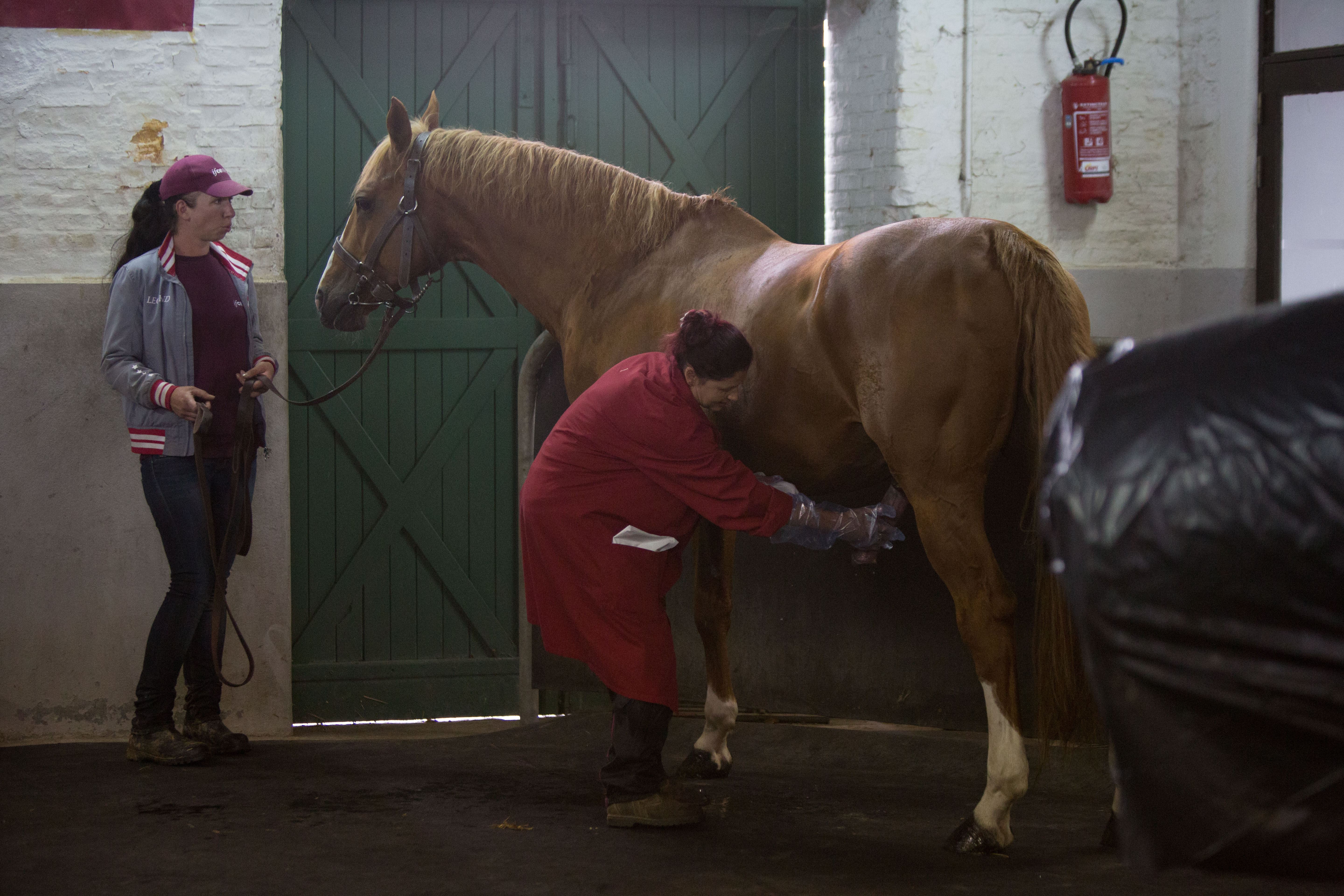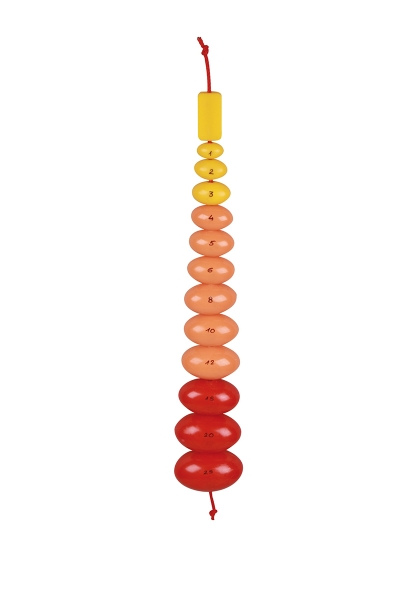
03.04.2018
IMAGE
To estimate the breeding soundness of a candidate stallion, an examination of his external genitalia and semen is indispensable. Since the testes are where sperm are produced and steroid hormones are secreted, they are examined in order to detect any abnormalities. They are also measured, because there is a correlation between testicular weight and daily sperm output.
N.B.: These examinations must be performed without mares in the vicinity. They may be easier following a semen collection, when the stallion is relaxed.
Look at the volume of the scrotum, checking that both testes are present and that they are symmetrical.
Interpretation
Palpation is a means of assessing the walls of the testes (thinness, any build-up of liquid), their consistency, surface evenness, volume, sensitivity, mobility within the scrotum and other walls, and the position of the tail of the epididymis.
It enables any abnormal heat to be detected. A hard consistency may be an indication of fibrosis. A soft consistency may indicate structural degeneration if it is associated with atrophy.
Palpation is easy to carry out. It should be combined with a measurement of testicular size. If an abnormality is suspected a veterinary surgeon should be consulted; they may decide to perform an ultrasound examination.
N.B.: with testicular torsion of 180° or more, the tail of the epididymis is at the front of the testis instead of at the back. This may cause discomfort for the stallion.
Whenever an entire male develops colic, it is essential to examine the scrotum before doing anything else: an inguinal hernia (indicated by an increase in scrotum volume, with heat or even pain) requires urgent surgery.
An ultrasound examination is carried out with the stallion backed into stocks, or in a box. Always remain on the left-hand side of the horse, even to examine the right testis.
The scrotum is moistened with warm water (to facilitate transmission of the ultrasound waves), and the probe, covered with an appropriate gel, is placed on the skin at various angles.
Interpretation
The thickness of the various tissues is assessed, and any pathologies are detected and located. To ascertain testicular volume (in cm3), the width, height and length of each testis is measured.

Positioning the probe to take the measurements.
An ultrasound examination provides valuable information on deep tissues. It is a useful complement to the other examination techniques.
Measuring devices
IMAGE
Calipers. (©FG/IFCE)
Using a set of calipers, measure the width across both testes together (total scrotal width). Take three successive measurements.
Interpretation
Calipers are widely used in North America where, to be deemed suitable for breeding, a blood stallion must have a total scrotal width of at least 8 cm.
Advantages
Easy to use.
Disadvantages
An imprecise estimation of daily sperm output. The shape and dimensions of the calipers also enable testis length to be measured, but not individual width or height.
The testes must be well descended in the scrotum to obtain reliable measurements.

A string of wooden, ellipsoid beads of increasing size. Used to estimate testis volume, with one hand holding the testis and the other hand used to find the bead of the corresponding size.
Interpretation
Nine beads representing a known volume: 140, 180, 200, 240, 270, 290, 320, 360 or 420 ml.
Advantages
Easy to use. Relatively reliable.
Disadvantage
A certain amount of experience is required before being able to take accurate measurements.
Used to measure the 3 dimensions of each testis: height, width, and length.
Requires a certain amount of experience to position the probe correctly and avoid variations in measurements between operators.
Testes of horses are egg-shaped and measure approximately:
– 9 to 12 cm long
– 4 to 6 cm wide
– 4 to 7 cm high.
They weigh between 200 and 300 grams (150 to 400 g). Age, breed and season can cause testicular weight to vary.
N.B.: The testes of a draft stallion are slightly larger than those of a blood stallion but the difference is less marked than the difference in body weight. Testicular atrophy can be observed from the age of about 15.
There is a correlation between the daily quantity of sperm produced and testicular weight.
Size measurements enable testicular weight to be estimated. Given that the yield is approx. 20 million sperm (between 16 and 21 million) per gram of testicular parenchyma, it is possible to estimate potential daily sperm output.
Thus, for example, 400 g of testicular parenchyma should produce 8 billion sperm per day.
– Based on testicular volume, obtained via ultrasound measurements expressed in cm:
Vol (cm3) = 4/3 π (pi) (Width / 2 x length /2 x height /2)
N (million spz/d) = 0.024 x (Left Vol + Right Vol) – 1.26
(Love’s formula (New Bolton Center, USA, 1991)).
– Based on the average width of the 2 testes:
Width (cm) = [Left Width (cm) + Right Width (cm)] / 2
N (million spz/j) = 2.21 x Wid. – 6.4
(Plongère’s formula (Institut du cheval, France, 1998)).
For example, a stallion whose testes each measure 5 cm wide, 5 cm high and 9 cm long would produce 4.4 to 4.6 billion sperm per day.
N.B.: These formulae are not valid for stallions of miniature breeds.
If the observed sperm output is significantly lower or significantly higher (double) than predicted, an abnormality may be suspected.
